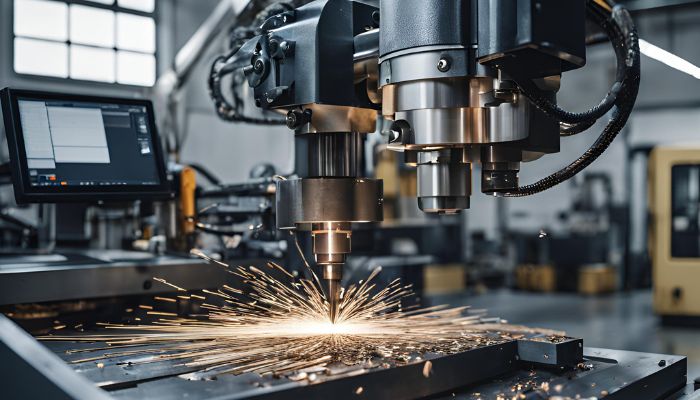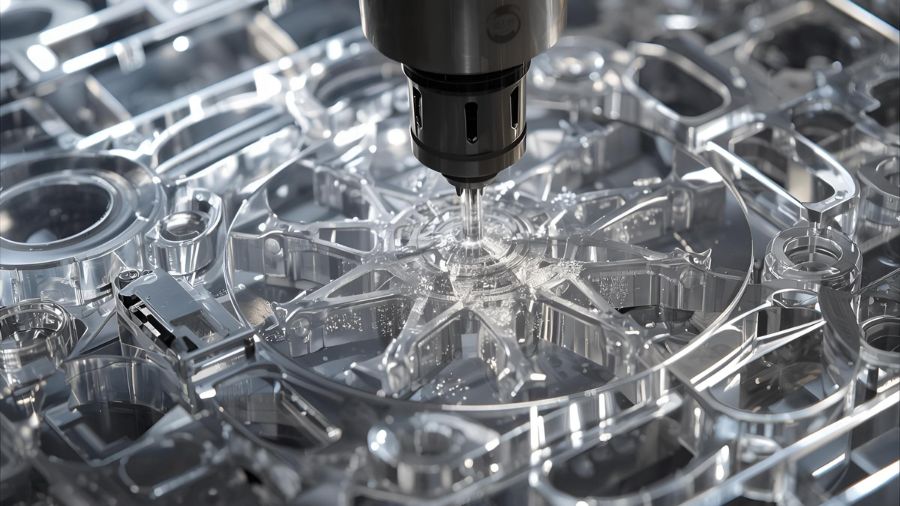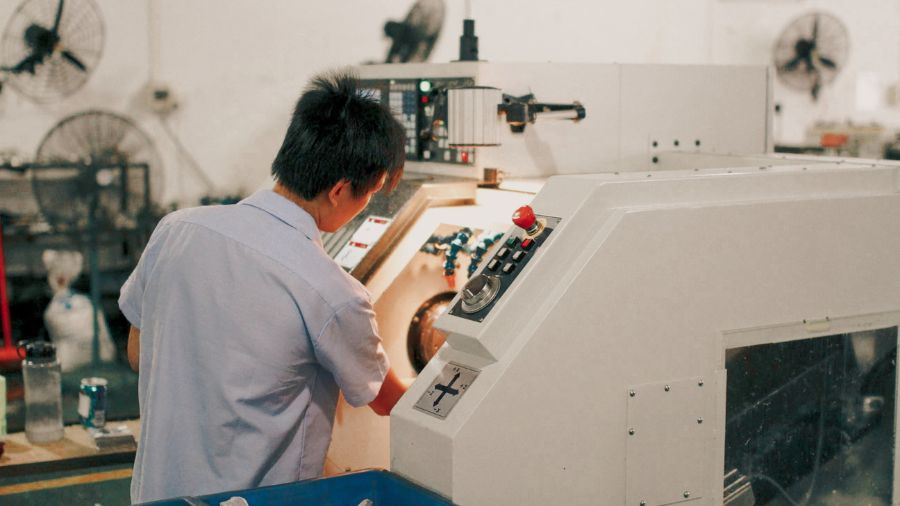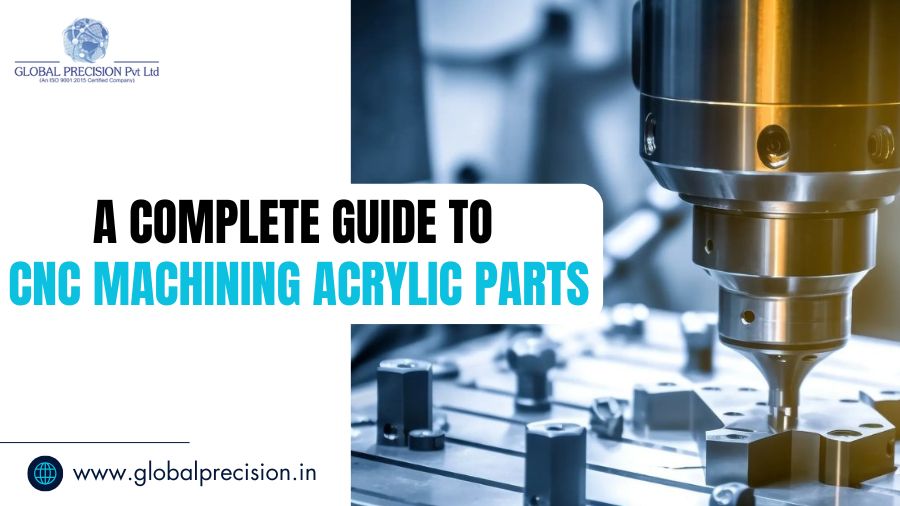Polymethyl Methacrylate, the scientific name for acrylic, is a remarkable substance. It is extremely durable, easy to shape, clear, and lighter than glass. These characteristics make acrylic a popular choice for a wide range of applications, including custom lenses, automobile parts, medical equipment, and upscale retail displays. However, how can a basic acrylic sheet be transformed into an intricate, precisely shaped part? CNC machining is the solution.
Let’s examine the complete procedure for making acrylic components with this highly accurate technology. You will discover why CNC is the ideal option for this adaptable plastic, regardless of whether you are an engineer, designer, or just inquisitive.
Table of Contents
What is CNC Machining & Why is it Perfect for Acrylic?

Computer Numerical Control is referred to as CNC. Consider a CNC machine as an extremely intelligent robot that follows a comprehensive computer program to cut, shape, and drill materials. It creates parts with amazing accuracy, frequently within thousandths of an inch, by removing material with rotating tools, much like carving wood.
Since acrylic is a thermoplastic, heat causes it to soften. Because of this, it is sensitive when cutting. The allure of CNC machining lies in its capacity to regulate each and every motion, force, and speed—a capability that is crucial for managing the particular difficulties presented by acrylic.
The Big Benefits –
1. High Precision – The finished product will be precisely the size and shape you intended because CNC machining produces parts with extremely tight tolerances. For precision CNC milling components, this is essential.
2. Clear Edges – CNC gives you that lovely, transparent, glass-like edge finish by preventing the acrylic from melting or “re-welding” back together when the proper settings are used.
3. Complex Shapes – The machine is capable of producing 3D shapes that are impossible to make by hand, including intricate, complex, and detailed shapes.
4. Repeatability – One of the main advantages of any expert CNC component manufacturer is the machine’s ability to produce one hundred or even a thousand identical parts once the program is set.
Step-by-Step – The CNC Machining Process For Acrylic

A few crucial steps must be followed in order to transform a block of raw acrylic into a completed component.
1. Digital Design(CAD)
A 3D model of the part is used to start the process. CAD (Computer-Aided Design) software was used to create this. The CNC machine uses this digital file as a blueprint to determine exactly what it should cut. The final product will be better if the design is better.
2. Programming the Machine (CAM)
The CAM (Computer-Aided Manufacturing) software is then loaded with this 3D design. This software converts the design into a set of G-Code instructions that the CNC machine can comprehend. Here’s where acrylic’s magic happens –
Tool Paths – The cutting tool’s exact route is planned by the software.
Feeds and Speeds – For acrylic, this is the most important setting! The proper Spindle Speed (RPM) and Feed Rate (IPM) must be selected by the programmer.
- The Rule – To cut cleanly, you need a high RPM and a fast enough feed rate to prevent the tool from staying in one place for too long. The acrylic will melt if it moves too slowly because of the heat produced by the friction!
3. Tool Selection
The cutting tool selection is crucial. Specialized bits are used for acrylic –
- Sharp, Polished Edges – To shear the material cleanly rather than rub it, the cutting instruments need to be incredibly sharp.
- O-Flute or Single-Flute Bits – Because they make it easier for the plastic chips—the waste material—to escape, O-Flute or Single-Flute Bits are frequently chosen. Chips melt and destroy the finish if they become stuck.
4. Securing the Material
The block or sheet of acrylic needs to be held firmly in place. A poor finish, cracking, or even a broken part will result from any movement or vibration during the CNC milling process. The material is securely fastened to the machine bed using clamps or a vacuum table system.
5. The Machining Phase
The actual cutting is done at this point by the CNC machine.
- Heat Management is Essential – Constant cooling is required due to the melting risk. In order to blow away the chips and keep the tool and acrylic cool, compressed air is typically blasted onto the cutting area.
- Multiple Passes – The machine frequently makes multiple, lighter cuts rather than a single, deep one. This ensures a smooth, transparent finish by lowering the material’s stress and further minimizing heat buildup. This is particularly crucial for intricate CNC Turned Components.
6. Finishing Touches
The part is taken out once the CNC milling is finished. Acrylic frequently requires final polishing to restore its maximum clarity and transparency, making it appear truly like glass, even though the cut edges are usually good.
Polishing – To produce a mirror-like, incredibly clear edge, methods such as basic buffing, flame polishing, or vapor polishing are employed.
Common Challenges in Machining Acrylic (and How to Beat Them)
| Challenge | Cause | Simple Solution |
| Melting/Re-welding | Tool moves too slowly, causing too much friction and heat. | Increase the Feed Rate and use compressed air for cooling. |
| Cracking/Chipping | Dull tools, excessive pressure, or improper clamping. | Use razor-sharp, specialized bits and ensure the material is secured tightly. |
| Rough, Cloudy Edges | Are caused by chip removal that is not fast enough or by a tool that moves too slowly. | Make sure you are using plastic-specific O-Flute cutters and maintain the correct speed/feed ratio. |
Because of these difficulties, it is crucial to collaborate with an experienced CNC components manufacturer. Businesses such as Global Precision Pvt Ltd are experts at getting past these material-specific obstacles, guaranteeing that your parts are manufactured with the utmost clarity and accuracy.
Why Choose a Specialist Like Global Precision Pvt Ltd?

Working with an expert is essential when your project calls for high-precision CNC turned components or faultless CNC milling components.
Because of its extensive experience working with difficult materials like acrylic, Global Precision Pvt Ltd stands out as a top CNC Components Manufacturer. They contribute years of expertise and state-of-the-art equipment, guaranteeing that –
- Every time, the right instruments and particular settings are applied.
- Your design will be clear and precise thanks to the careful handling of complex geometries.
- The finished product is flawlessly finished in addition to being precisely cut.
Advanced CNC Machining technology and material expertise, as provided by Global Precision Pvt Ltd, are essential for projects ranging from delicate optical components to aerospace parts. This combination gives acrylic manufacturing a distinct advantage.

